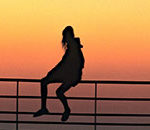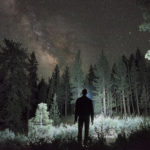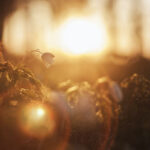Being halfway in a dream land, as a stranger. That’s how Asgeir Helgestad, a nature photographer and filmmaker based near Oslo, Norway, describes the feeling of photographing wildlife.
Throughout his career, Helgestad’s stunning wildlife documentaries and photographs have captivated world audiences and encouraged countless individuals to appreciate nature’s boundless beauty and immerse themselves in it. In this video, Helgestad explains his views on wildlife photography—particularly his definition of success in the genre and the frame of mind necessary to achieve it:
What is Success?
For Helgestad, rather than a culmination of prestigious awards, print sales, and other photography-related accolades and income, success in wildlife photography is tied to one’s ability to craft photographs that captivate viewers’ emotions and provoke them to care for the environment rather than abuse or neglect it.
“The most important thing I can do as a wildlife photographer is to show them the beauty and importance of taking care of what we have,” said Helgestad. “Success, for me, is actually if I could move people with my work… to see what I see. If I can bring [that] out to others, it’s good.”
Helgestad also considers himself successful simply because photography allows him to immerse himself in nature to behold its wonders and witness animals living out their lives in the wild, free and noble. This vision of excellence is one of humility, tempered with utmost respect for the natural world, and Helgestad is able to maintain it even in some of the harshest conditions imaginable because he has cultivated a unique frame of mind that sets him up for success.

Helgestad’s passion drives him to this quality of work.
How to Achieve Success as a Wildlife Photographer
1. Nevermind the weather. You probably shouldn’t try to photograph animals in extremely dangerous conditions, but don’t shrink away from challenges either. The majority of Helgestad’s photos are taken in the Artic, especially in Norway and Antarctica, but he doesn’t mind the bitter cold because of his passion for wildlife photography.
2. Be dedicated. As with adverse weather conditions, Helgestad isn’t bothered in the least by the immense amounts of time and patience that are required to master wildlife photography. Besides the actual practice of sitting behind a blind waiting for wildlife in the field, Helgestad spends long hours studying animal behavior so that he can learn to predict animals’ movements and be better prepared to capture those once-in-a-lifetime moments when they come.
“You’ve got to be at the right place,” said Helgestad. “You’ve got to know the animals, know what they think and how they act. You’ve got to be a little bit of [an] animal psychologist, in a way, to realize what’s [going] to happen.”
3. Go after what you want. At the beginning of Helgestad’s wildlife photography career, he would trek out into the woods in search of “something interesting” to photograph, but after many years, his process has matured. Now, Helgestad envisions the images that he wants beforehand and then heads out into the wild with the intent and know-how to create them.

Helgestad photographed this arctic fox in Svalbard, a Norwegian archipelago in the Arctic Ocean.
4. Connect with the animals. It’s not enough to simply photograph a wolf in a technically-sound manner—you need to tell a story or transmit emotion in your images. Figuring out why you were drawn to photographing the wolf in the first place as Helgestad does will help you to make better pictures and grow your photography skills.
“It is not about getting as close as possible, but to capture the feeling of being there. I think that it is important for me to be out there and capture the soul of the animal. I don’t just want to look into their world. I would like to be part of it.”
5. Be thankful. Instead of wasting energy complaining about weather conditions or boredom while you’re laying in wait for that perfect shot, remember the privilege it is to do what you do and to see what you see. Most people will never get to experience nature’s majesty in its fullness as you do; they will only get a small picture of it through your photographs.
6. It’s not just a job. Perhaps the most important facet of Helgestad’s mentality is that photography is not only something that he does to make money. If that’s all photography is to you, then you will likely run short on motivation and give up when challenges begin mounting up against you instead of sticking it out to get the shot you were hoping for.

Helgestad encountered this polar bear family in Svalbard.
Most of Helgestad’s work is captured in 5K Ultra High Definition (UHD) with his large format RED Epic camera, which is capable of delivering RAW files sized at 5120 x 2700 pixels with 96 frames per second and up to 240 fps at smaller dimensions. Reportedly, the RED camera’s high dynamic range and low noise levels provide Helgestad with uncompromised detail and amazing colors.
Helgestad also commonly uses the following Canon lenses in his work:
- 8-15mm f/4L Fisheye USM
- 500mm f/4L IS II USM
- 16-35mm f/2.8L II USM
- 24-105mm f/4L IS USM
- 70-200mm f/2.8L USM
- 100-400mm f/4-5.6L IS USM
- 300mm f/2.8L IS II USM
- 200-400mm f/4L IS USM
“You cannot run from one thing to another thing all the time. You should get [into] the depth of [something] and do it well. I think it is passion for the wildlife that drives me out there every day. This isn’t just a job. It is actually for my heart.”
Like This Article?
Don't Miss The Next One!
Join over 100,000 photographers of all experience levels who receive our free photography tips and articles to stay current:






Leave a Reply